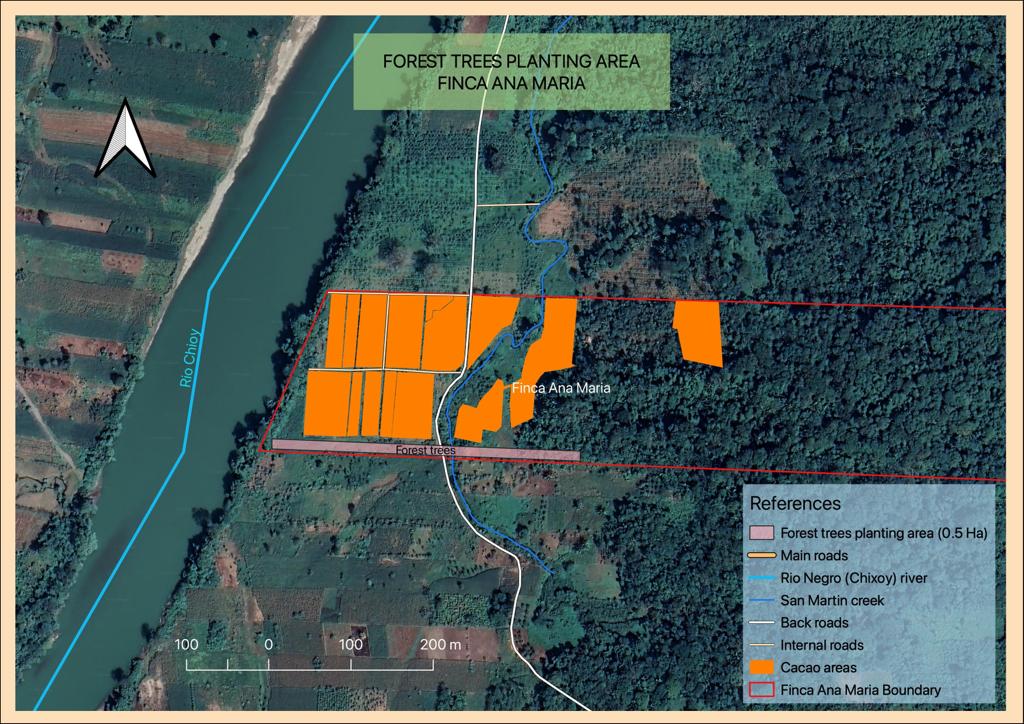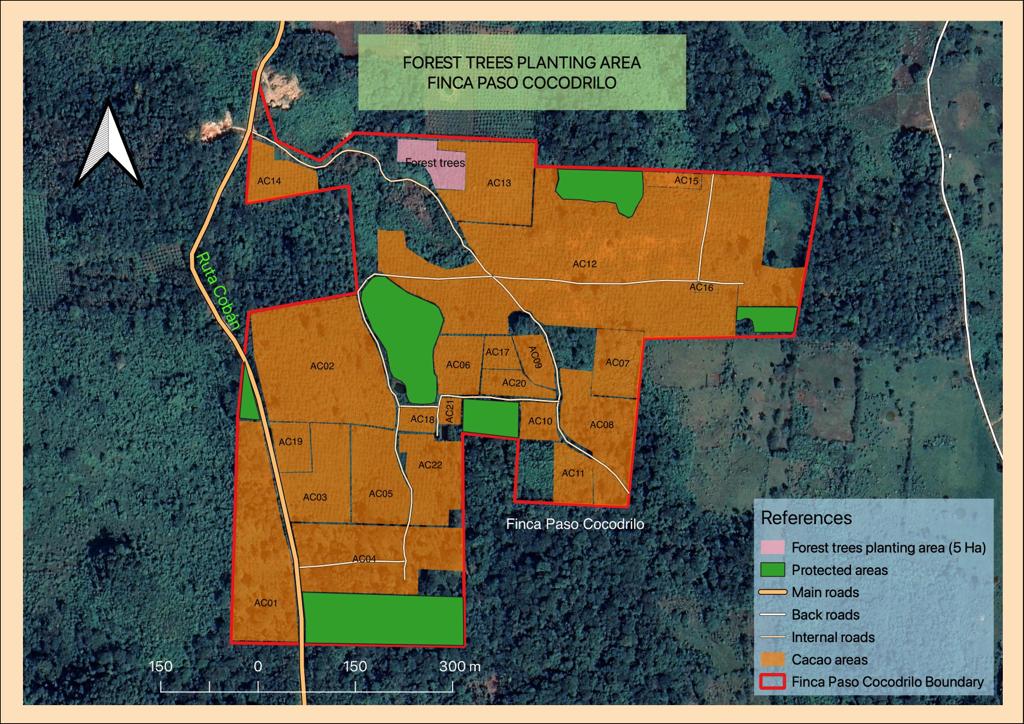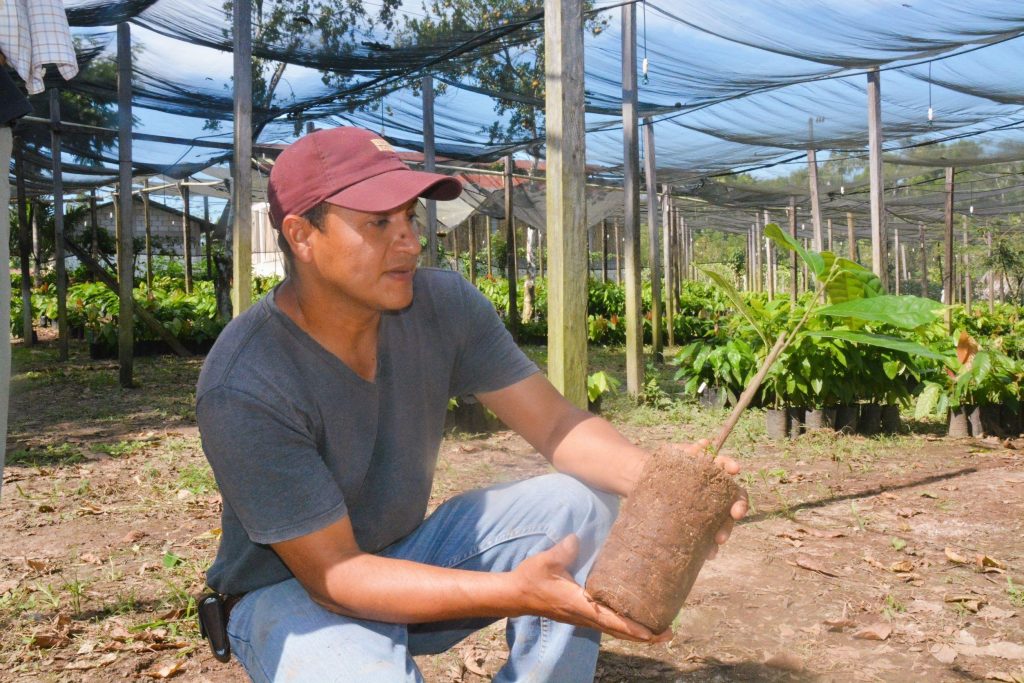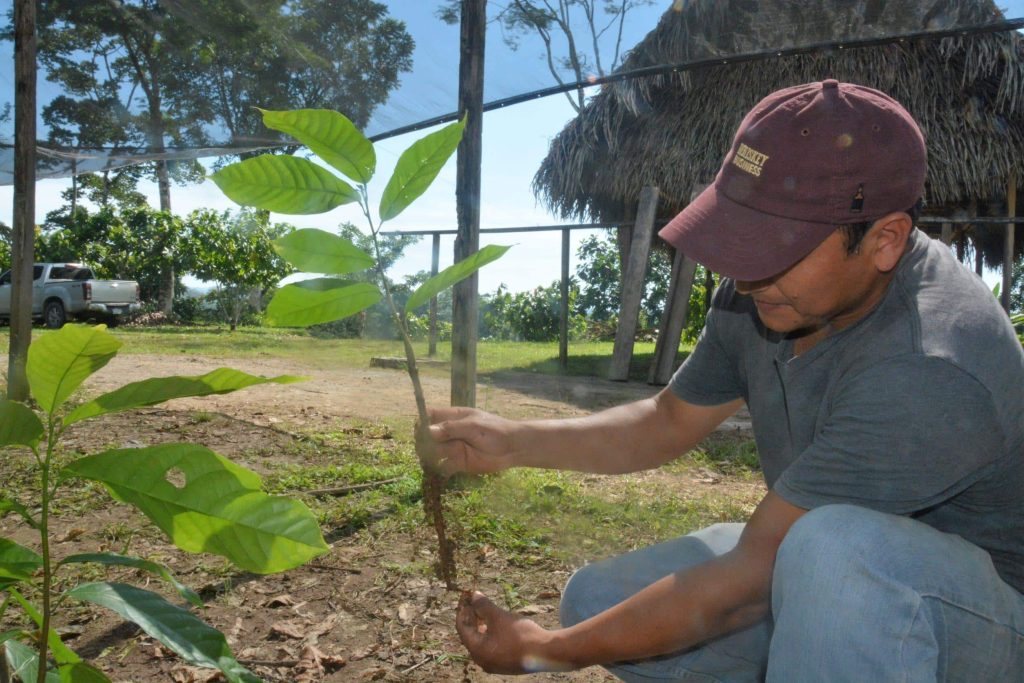CONGRATULATIONS!
Thank you for helping us plant this tree.
Just like that… you are giving a helping hand to the restoration of the Lachuá National Park in Guatemala.
WHERE IS MY TREE PLANTED?
We truly believe forest restoration is one of the best ways to fight climate change. It’s so good, in fact, that we’re repeating our ‘traditional annual’ tree planting campaign in 2023, doubling last year’s efforts.
This time we will be planting trees in Guatemalan Eco region ‘Lachuá‘, together with our partners of Finca Ana Maria & Finca Paso Cocodrilo.


LACHUÁ REGION
The Lachuá ecoregion is a key strategic tropical wetland due to its abundant water resources, and a true biodiversity hotspot. There are over 300 species of birds, including mealy parrots and throat-billed toucans. Jaguars still roam the park and sometimes you can even see their tracks.
The lake water has a slightly sulphurous smell, which may explain the origin of its name: “Lachuá” is derived from the Q’eqchi’ words “la chu há” which means “the fetid water“.
By replanting trees in this area, we contribute to create an ecological corridor where flora and fauna can flourish. The corridor is a passageway for animals to migrate and increase their territory.
The newly planted trees are also a carbon sink to capture CO2 from the atmosphere and help to mitigate climate change.


FINCA ANA MARIA & FINCA PASO COCODRILO
FINCA ANA MARIA
Finca Ana Maria is a model farm in the area, and a source of inspiration for neighbouring farmers. The farm is known for adopting best-in-class farming practices, and the cacao is carefully selected from native parent trees and cloned in the farm’s nursery. For every area, the genetics of the cacao trees are identified.
FINCA PASO COCODRILO
Only 5 years ago, this area was a grazing land for cattle, with hardly any trees. Arturo, Erick and their team turned things around transforming this barren grazing land into a thriving plantation. Cacao trees are intercropped with other trees, bushes and plants; all greens are planted and designed for maximum CO2 sequestration and optimal cacao productivity. Each year this cacao forest captures over 275 tonnes CO2. Deducting the 20 tonnes emitted by the farm, (mainly emissions from fertilizer & energy use), a net 255 tonnes of CO2is sequestered every year. A carbon positive farm, indeed!
Finca Paso Cocodrilo also connects the eco region of Lachuà with nearby forests, creating a corridor and increasing the habitat of wildlife. Three years after the first cacao tree was planted, a jaguar was spotted strolling through the corridor that is the Finca Paso Cocodrilo. This jaguar symbolizes the great success of the project.
WHO WILL PLANT THE TREES, AND WHEN?
The trees are already being raised in a nursery as of december 2022 and a team from Finca Ana Maria & Finca Paso Cocodrilo are taking care of the seedlings. When these are big enough and ready for planting, farmers from both farms will plant the trees. To thank the farmers for their hard work and continuous efforts to restore the forest, they are compensated accordingly.


In total, we will reforest 1 hectare. We support the planting of 1,100 trees in a connecting forest corridor in Ana Maria, and conservation areas in Paso Cocodrilo. By planting additional forest trees on open areas in the farm, plots of rainforest will get better connected again and this will further improve biodiversity.
The trees are all native species: caoba (Swietenia macrophylla), rosul (Dalbergia stevensonii), cola de coche (Cijoba arborea), and will compensate for 8.3 tonnes CO2 per year. This is 250 tonnes CO2 over their entire life cycle, which equals the annual emission of 36 European citizens. A true value for nature and climate!
